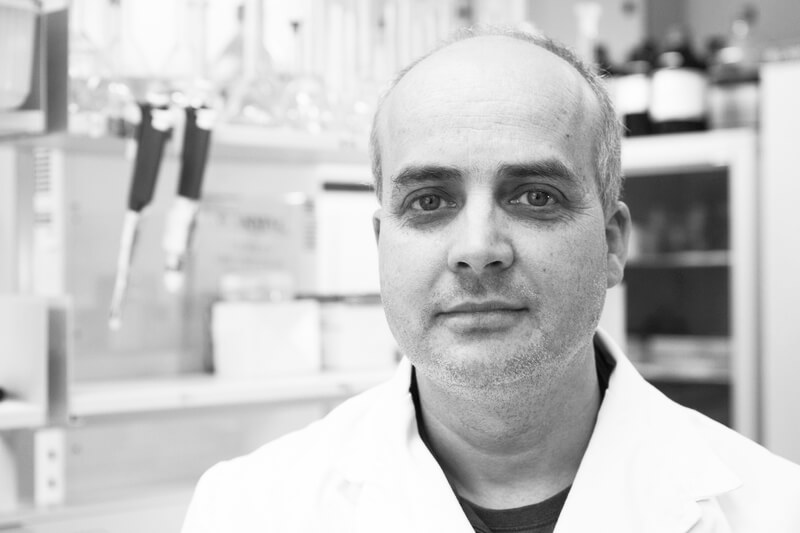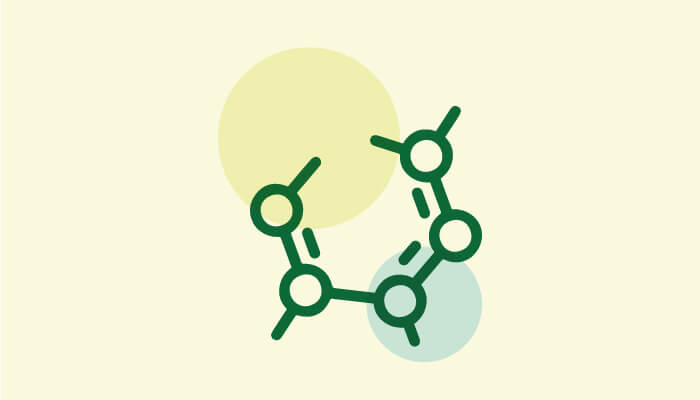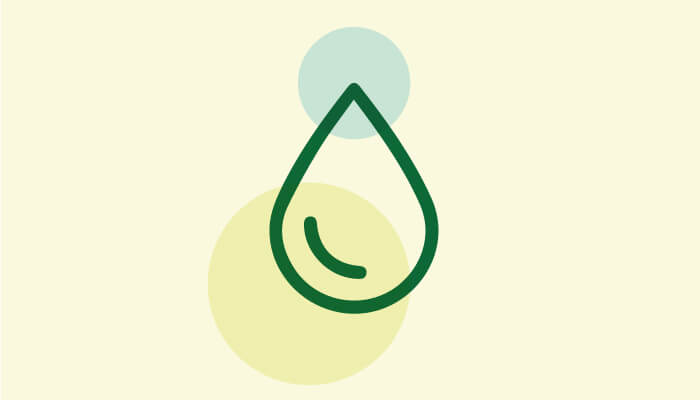With continuing pressure from dedicated groups and scathing headlines fueling wider frustration, pollution is never far from government agendas or the public consciousness. The Greenpeace Research Laboratories – established more than a quarter of a century ago – have played a significant role in raising the profile of microplastic and heavy metal pollution. We spoke with David Santillo, one of eight scientists employed at the Laboratories at the University of Exeter, UK, to find out more.
What motivated you to work at Greenpeace?
Central to Greenpeace’s mission is the idea of “bearing witness” – reporting on environmental pollution using advanced analytical techniques. My greatest hope is to shed light on the monumental problems that we face, and that’s a real motivator. Whether dealing with chemical or plastic pollution, the goal is always to address the issue at its source.
Analytical science plays a vital role: if you don’t have high-quality evidence to back up your case, then all you can speak about are generalities, which don’t provide solid foundations for good policy. You can only understand the complexity of chemicals in the environment by applying analytical techniques.

More generally, I’m invested in the use of the methods, skills and experience gained throughout our careers to make a real difference – and Greenpeace allows me to do that.
What major areas do you focus on?
There are a number of key themes we explore. The major ones are complex waste analysis, analysis of environmental matrices (soil and sediments), and water analysis. We try to go beyond simply identifying common contaminants by forensically screening our samples to determine what other chemicals are present (but not necessarily being recorded). These molecules can be anything, from organic compounds to non-organic pollutants and heavy metals; we’re looking to uncover the real story by identifying these components in industrial and environmental waste, consumer products, and food samples. We’re driven broadly by Greenpeace’s overarching campaign goals, but within that we are afforded some flexibility, which allows us to develop novel research programs that drive the understanding of the wider scientific community.
We’ve found that there are a lot of more chemical pollutants in the environment than those typically screened for. Part of the problem is that these chemicals are never found on their own – they’re always a component of more complex mixtures. Documenting this has revealed just how important it is to deal with these chemicals at their source, before they have the chance to enter the environment.
A recent example of our application of environmental forensic analyses is our study documenting soil pollution at a landfill site in Poland that was thought to be receiving hazardous waste (1). The waste was building up but then periodically catching fire, making it potentially very difficult to trace the problem. However, through a combination of our own analyses and working with another external laboratory, we were able to characterize the contaminants in soils impacted by those fires, revealing that complex chlorinated products and dioxins were leaching into the soil and damaging the local environment.

Among the biggest concerns at the moment – and certainly the one that’s gaining the most media attention – is microplastics. There are two sources of chemical contamination when it comes to microplastic (besides the plastic itself): (i) plastic additives, which provide color, structural stability, or texture, and (ii) additional chemical contaminants gathered from the broader environment or a wastewater treatment process. Last year, we studied this particular problem in the coastal waters of Scotland, and were able to characterize not just the types of plastics involved, but also the pesticides, household chemicals, metals, and other contaminants attached to them.
How do you ensure the quality of your science?
We publish everything we do in some form – either in peer-reviewed papers (our preferred route), results papers or technical reports. We make all of those available to the public for free on our website so that, even if some of our work doesn’t undergo formal peer review, it is still open to public scrutiny – anyone can download it, anyone can read it, and anyone can criticize it. Clearly, people may have different views on the policy implications of our work, but the science itself is very rarely challenged.
Many of the methods we’ve developed have been adopted by the wider community. The more we can publish and the more attention we can garner, the greater the benefit for society. Of course, for our science to have that effect, we need to have absolute confidence in the research that we do. And that’s why we apply state-of-the-art methodologies and work to the same standards as any other analytical laboratory. We can never compromise on the quality of our work.
What are the main contaminants of interest right now?
We’re currently reviewing chemical contamination generated by ineffectual plastic recycling processes in Malaysia. We’ve identified a wide range of contaminants that we’re now bringing to the attention of the local authorities. And that’s really our main objective – to point out when pollution is being generated “under the radar”; often even the producers themselves are unaware. At the same time, we aim to equip the authorities with the evidence they need to hold to account those responsible.
In general, decision makers around the world are willing to look at our results and see them for what they are – whether that’s in East Asia, Europe, or South America. There is a degree of acceptance that the work we’re doing is valid and valuable. Our role is not simply to represent scientific issues to the public, but rather to capitalize on the serious opportunities provided through our capabilities in environmental forensic analyses to carry out primary research, thereby bringing awareness to these problems, and encouraging those with the power to effect change to do so.
You spoke about microplastics at LabAnalyse 2019...
I gave an overview of the work that Greenpeace scientists have conducted over the past 12 months, with a particular focus on pollutants. We participate in collaborative projects examining how chemical contamination has been affecting wildlife, including turtles, whales and dolphins, with researchers at the University of Exeter and at other research institutes in the UK and beyond. Microplastics and plastics are a major pollution problem; they’re found not only in just about every sample of river or seawater, but are also evident in the wider environment. They can be found in the guts of stranded whales, dolphins, and seals, as well as inside turtles killed by fishing trawlers.
We also discussed the forever-changing nature of microplastic contamination and its associated chemical composition – a major problem. With microplastics, every sample we take from surface seawater or a river – even when it’s from the same location one hour later – is unique. It makes analysis extremely challenging, and means that averaging exposure and risk for assessment of potential impacts is almost impossible.
There are also more technical challenges to consider: degradation of the samples, degradation of plastics, recovery, cleanup, quantitative detection, and so on. Fourier-transform infrared spectroscopy is a powerful and very versatile technique, but ideally, we would also examine samples for the presence of much smaller fragments and fibres. Other techniques are available for microplastics analysis, but each of those methods has its own limitations. Looking forward, there’s a need for method development that would allow for more rapid sample screening and, in particular, to have some form of quantitative indicator to reveal microplastic levels in sediment. If – as is the case currently – that remains a time-consuming process, then I believe most regulators will be unwilling to devote the necessary time to conduct these analyses.
A new system capable of more rapid sediment sample screening represents a niche yet to be filled. An efficient and reproducible way to retrieve all contaminants through further analysis is needed if we are to look for microplastics in sediments in a quantitative way; that can be a lengthy and complicated process, with lots of potential for contamination. The only thing that’s crystal-clear right now is that there is no easy answer!
What are the highlights of your career?
Every time we publish a report that has any kind of impact is a moment of personal delight – even more so when it’s picked up by the press and drives changes in policy. Some of our work examining electronic waste has been particularly impactful, helping to tighten regulations, both on the chemicals used in the production of electronics, and the management of the resulting waste. More broadly, we’ve carried out a lot of work around textile production, ensuring that the chemicals used both in production and the finished product are held to the highest standards.

However, one example that I would highlight more than any other is actually the product of foresight. More than 20 years ago, we began using mass spectrometer instruments in “scan mode”, which allowed us to examine a broader range of pollutants. At the time, some viewed such approaches as unconventional and of little value; the convention being that you ought to focus only on particular contaminant groups in detail – there was simply no time or justification for spreading the net wider with broad-spectrum analysis. But gradually, the fact that we were able to identify complex mixtures of pollutants that, though previously undetectable, were nonetheless of enormous relevance in terms of environmental protection, began to lead to a recognition that we may have been on to something all along.
It took a long time for our approach to become common practice, but increasingly we hear from other laboratories that the MS screening in "scan mode," rather than merely for a finite list of chemicals, is one of the fastest growing requests from clients today. A change we instigated 20 years ago is becoming part of the gold-standard today!
What does the future hold?
To some extent, more of the same. There’s always value in investigative research, particularly if that involves regions or contaminants to which nobody else is paying much attention. There is a huge amount left to uncover. I think there’s a certain danger in assuming that we know everything there is to know about a certain type of contaminant or its movement through the environment.
More broadly, we’re witnessing the start of a major cultural shift – one in which our work is beginning to seriously impact public policy and corporate development. At the same time, with the development of smarter materials, smarter products, and smarter processes, we will see a shift away from environmental investigation towards pollution prevention – taking the problems from the rivers and seas back upstream and into the factory itself at long last!
References
- I Labunska et al., “Case study: PCDDs/PCDFs, PCBs and other organic contaminants in soil and ash samples from the scene of a fire at a hazardous waste dumpsite in Poland”. Poster presented at the 39th International Symposium on Halogenated Persistent Organic Pollutants DIOXIN 2019; August 26, 2019; Kyoto, Japan. Poster #1-PS-196. [Available to view here]




